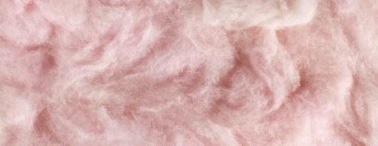
Looking back in history at the different styles of dwellings the one thing that they all had in common was the ability to maintain comfort for the occupants. The “soddies†of the first European settlers on the Great Plains were made from a rough wood frame with a covering of the very turf they walked on. This not only shed the elements but the organic composition mixed with the rich earth provided a stable temperature, cool in the summer and warm in the winter. Stone castles and brick houses were not great at holding heat and needed the constant heat from huge fireplaces to maintain any sort of stable comfort. However, in the summer they were cool.
The key to a stable temperature in a home is the insulation factor in both the walls and attic. Heat will try to seek out cold in the most direct path it can take, and since heat rises an un-insulated attic this provides a perfect escape route. To test this out get a step-ladder and a thermometer, and then climb up until you can touch the thermometer on the ceiling. After a few minutes take the reading and then go down and place the thermometer on the floor. Moments later you will notice up to a 10 degree difference or more.
Home Insulation is a Road Block for Heat
In the winter heat will try to get out through the most direct path possible. Most of the time this is through standard windows or the metal on old window frames or door knobs. If the home is drafty the cold air coming in has the ability to cool a home as fast as it is being warmed. The effects will be noticed not only on your body but on the heating bill as well. This is why new homes are made to an R-2000 standard. The home is essentially sealed against cold air and insulated to keep the heat in. AS well the windows are usually have the low emissivity coating and are filled with a heavy argon gas to avoid convection currents between the panes. This is another avenue for heat loss.
Older homes and newer houses built with unfinished basements are subject to rapid heat loss. This is especially true with forced-air furnaces, because in homes that are not energy efficient the home cools down quickly causing the furnace to start up again. The object is to tighten up the home and top off the insulation. In some cases these old homes have no insulation at all.
Insulation Methods
Heat protection is generally measured with an R-value. This is a factor that denotes the heat retention qualities. For example, most new homes have and R-19 value in the walls and an R-40 rating in the attic. Notice that the ceiling insulation is more to combat the natural rising of the heat.
Fiberglass Batt: Most frame-built homes are insulated with fiberglass batt. This comes in standard widths so it can be placed between the studs. Put in properly and covered with a plastic vapor seal, this is a very energy-efficient wall. However if the exterior is porous and the batts are not placed right, cold air can find a way in, cooling off the inside of the wall and allowing cold air to enter the home through electrical outlets and other fixtures. Made from sand, recycled window glass and bottles fiberglass will also not burn, sag from heat promote mold. Fiberglass has an R-3.3+ per inch rating.
Blown-In Cellulose: Another recycled product is cellulose that comes from old newspapers. The shredded paper is soaked in a fire retardant, dried and then installed by blowing it into the home through a hose. This works great in old homes with no insulation as the empty cavities can be filled to the top. The installer drills holes at the top of the walls and then fills the space between the studs. Because the pieces are s small they get into every crevice. After the job is completed the installer will read the home with an infra-red gun to find and fill any missed spots. The only drawback is that it will fail if is gets wet. The R-value for blown-in cellulose is R-3.7+ per inch.
Spray-in-Place-Foam: The scare of urea formaldehyde insulation (UFFI) was enough to scare many people away from foam sprays but they have come a long way since then. The knock against UFFI was the formaldehyde off-gassing that lingered long after the installation. Today there are safe sprays which feature products made from soy bean. Basically, the installer has a wand with 2 tubes leading to 2 different tanks. The sprays mix together to make the product as it goes on the wall. There are two main types:
- Open Cell Spray - This type comes out soft like the padding in packaging for delicate objects. It is also the kind used for pillows and sea cushions. This is because the cells are open and fill with air. However they can also accept water. The are between the studs is filled and the excess scraped off with a special trowel. In addition, the R-value is roughly that of cellulose and fiberglass, 3.5+.
- Closed Cell Spray - This is a denser material - using as much as 5 times the material as open cell - dries hard into a waterproof, highly-efficient insulation which seals up the walls completely to as much as R-24. As the R-value can be achieved with a lower profile it is popular for areas where space is limited and where moisture may be a problem. However, this comes at a price that is almost 4 times as much as fiberglass batts.
Rigid Foam
Sometimes called “foam boards†this insulation usually comes in different sizes and thicknesses of 1†and 2â€. It is great for exterior insulation of basements or in areas where a thinner interior wall is desired. It has great R-values of R-4 to R-8 per inch, is waterproof and easy to install either between the studs or glued on the cement wall of a basement.
Posted by: TrustedPros





